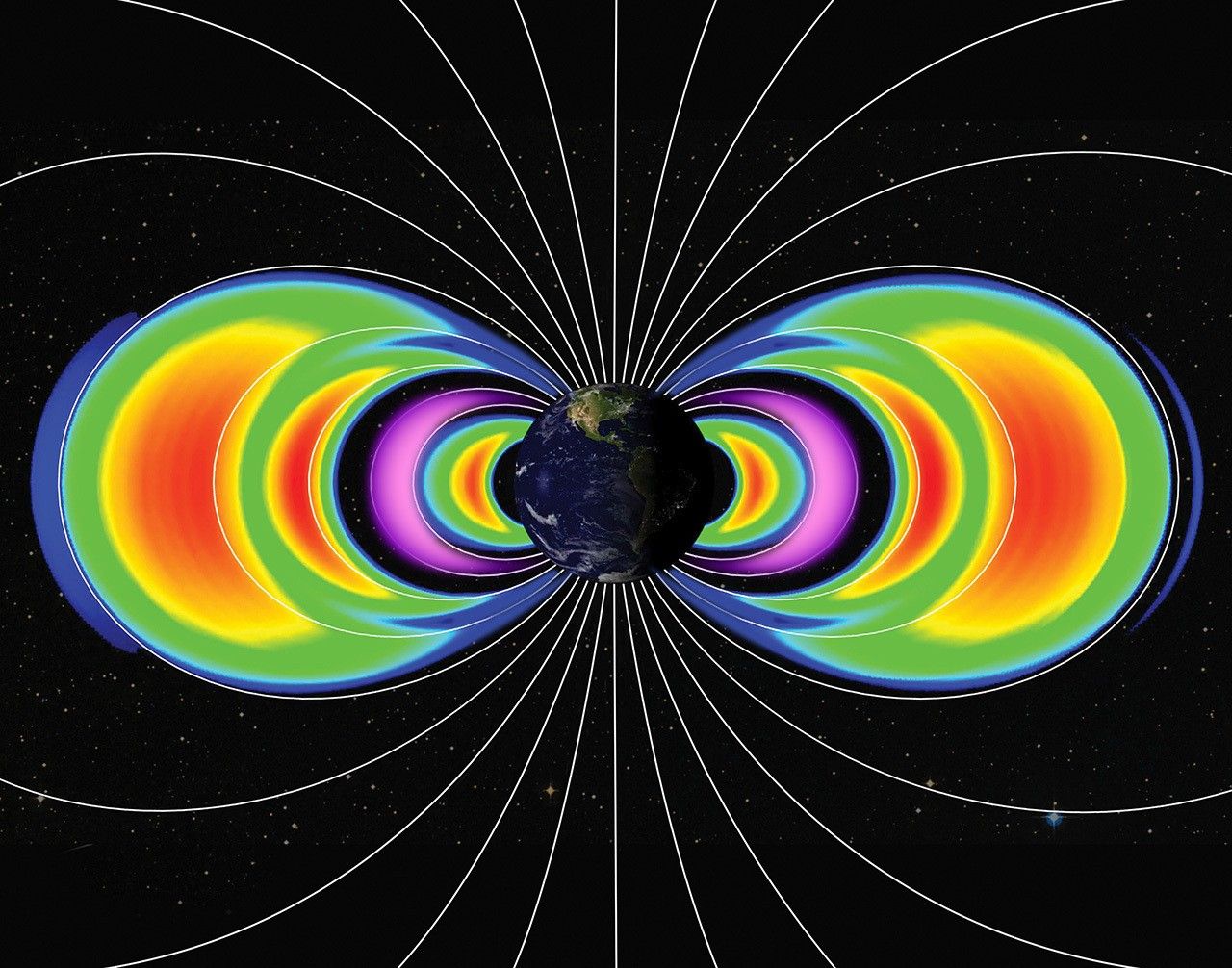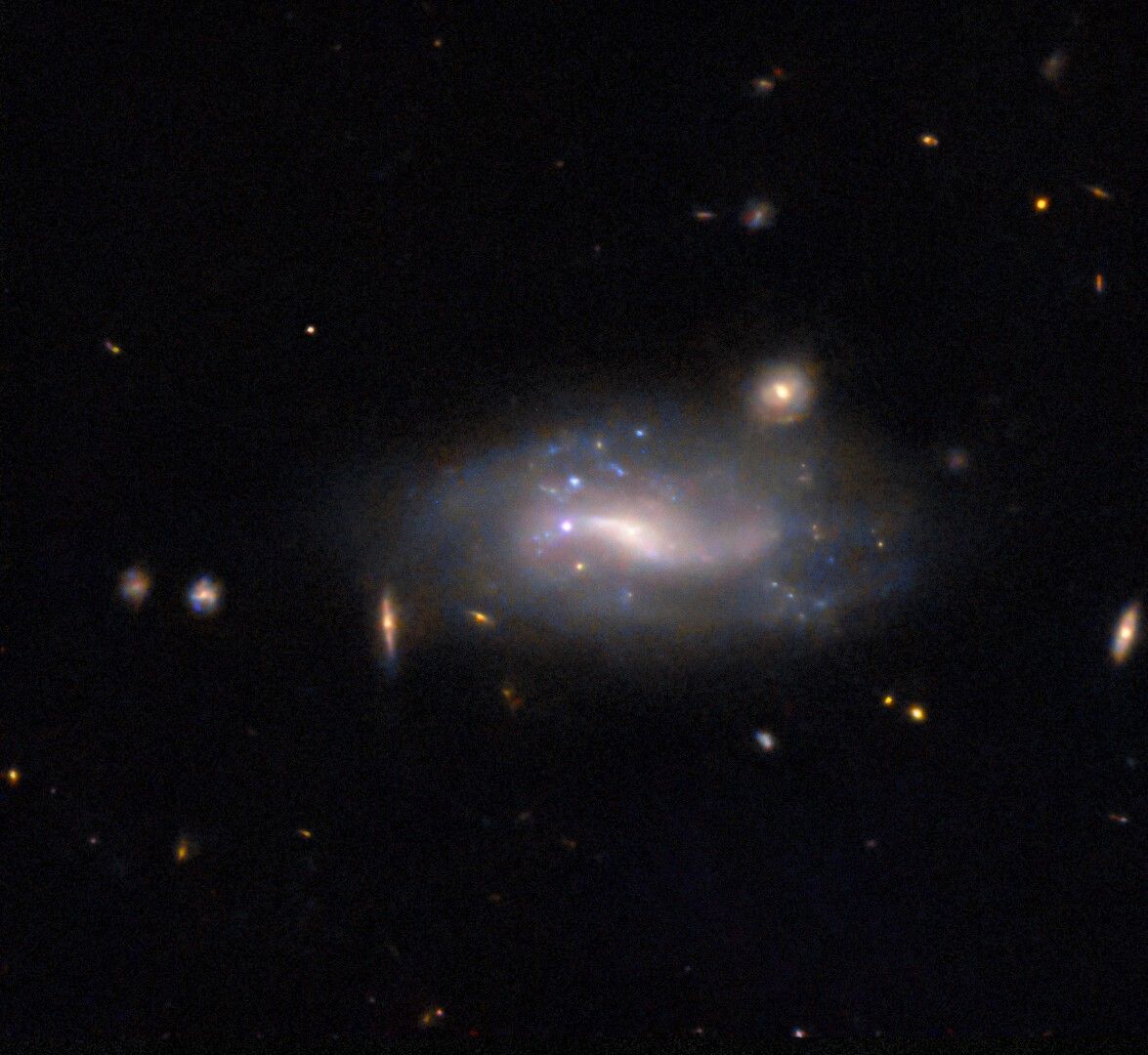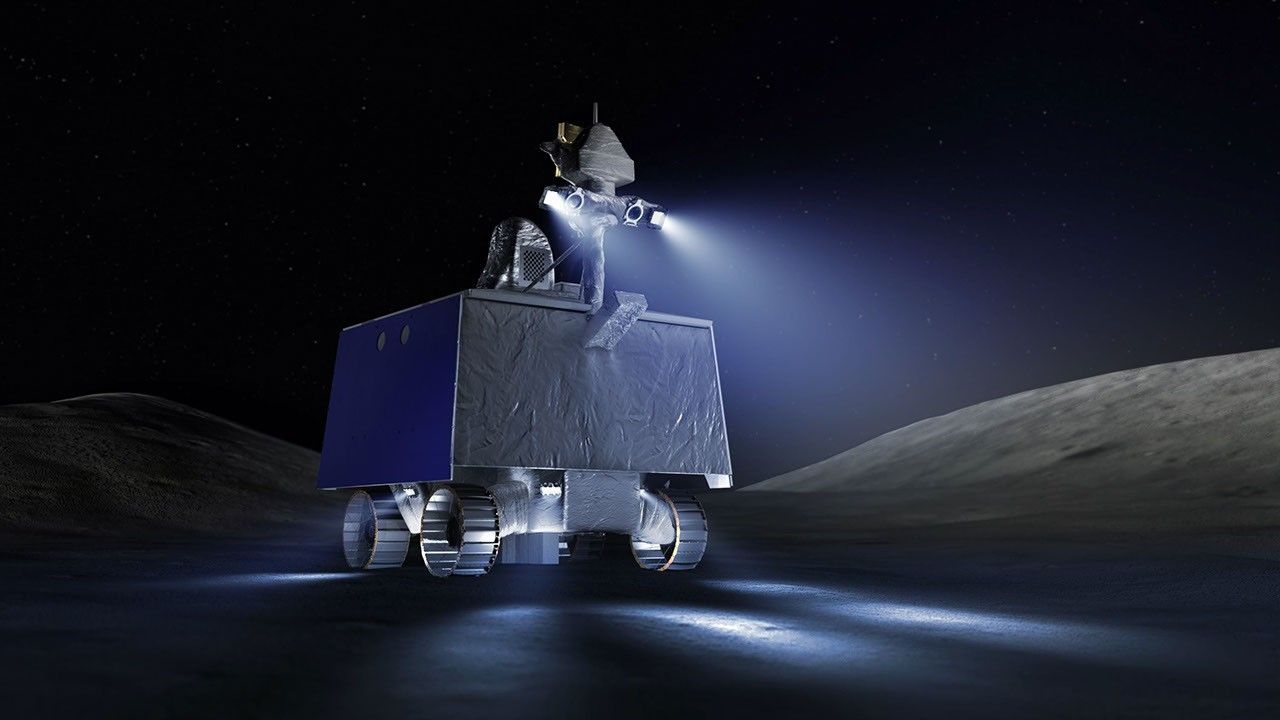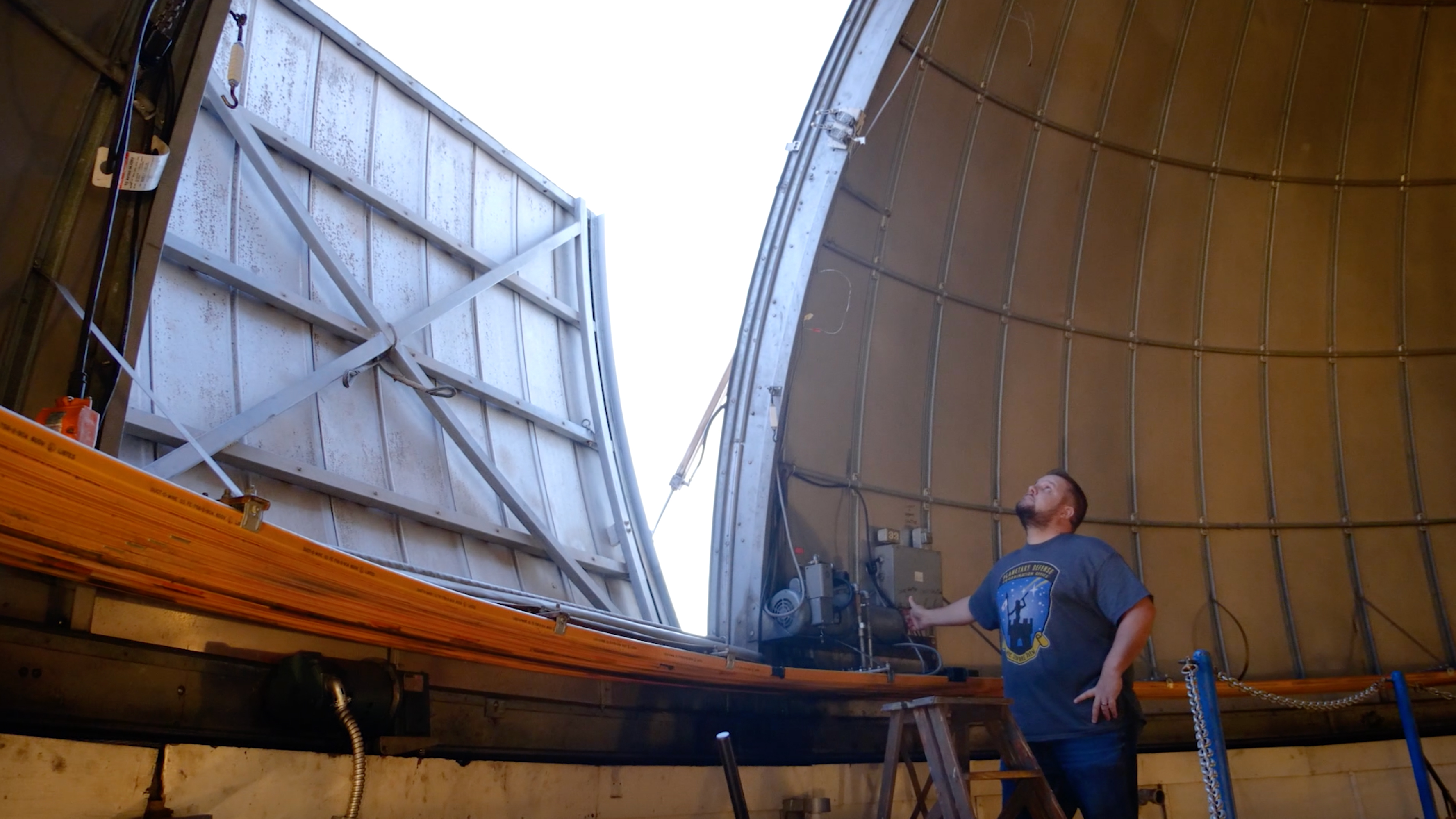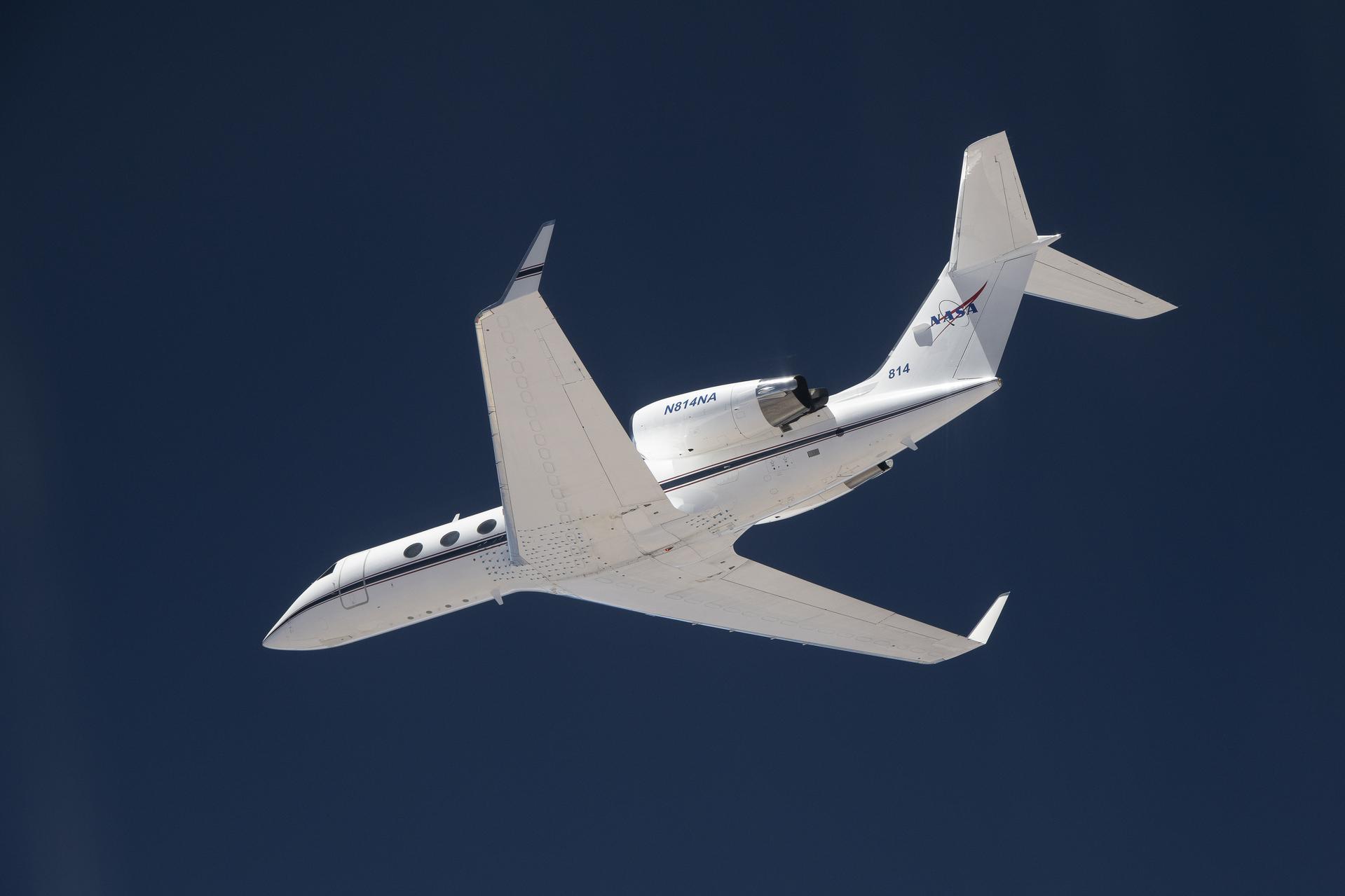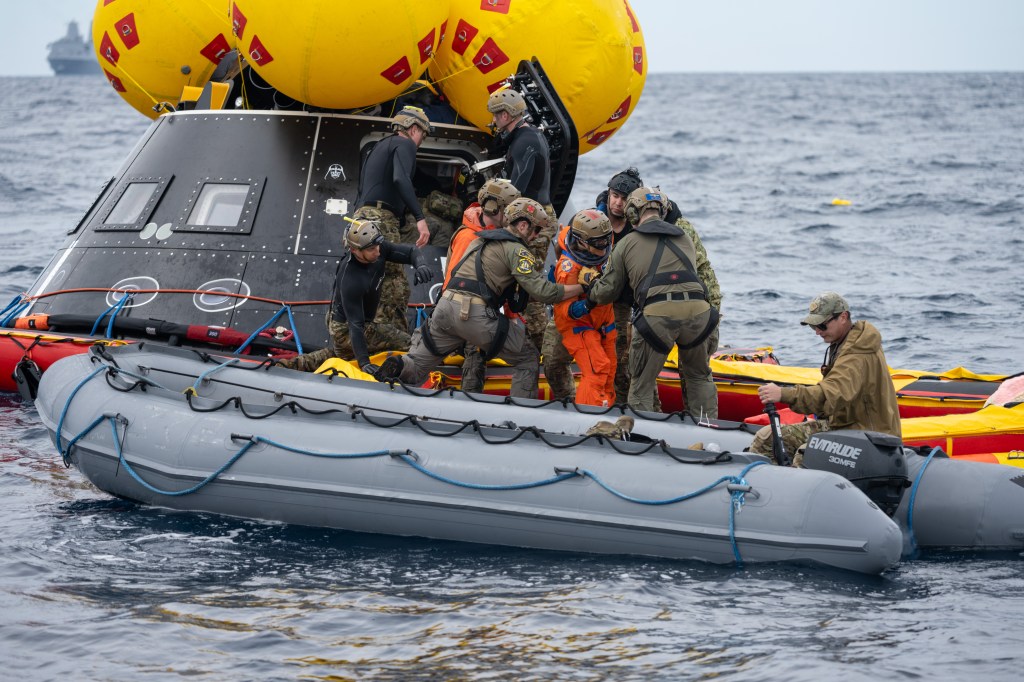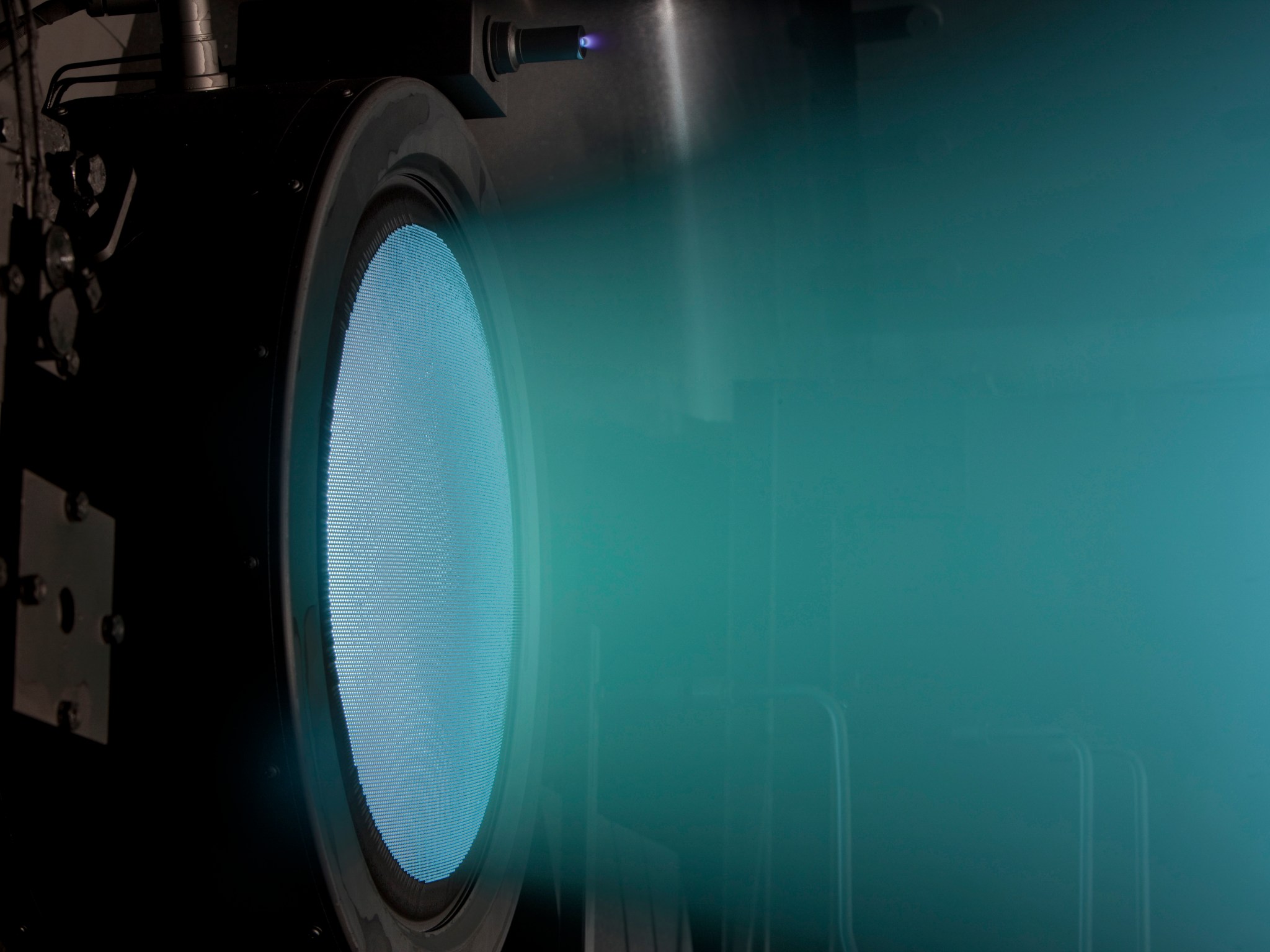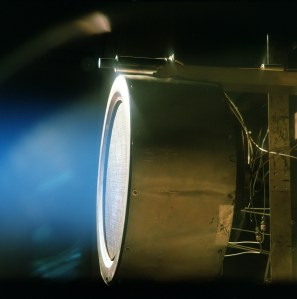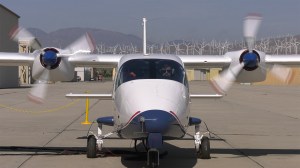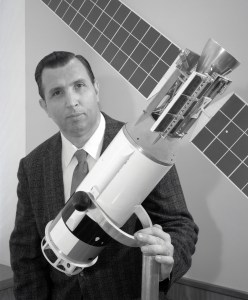Deep Space 1 (DS1), the first of NASA’s New Millennium Program missions, tested 12 advanced technologies and instruments in space. DS1’s flight testing of new technologies pioneered the way for future spacecraft and missions to have an arsenal of revolutionary technical capabilities for exploring the universe.
The NASA Glenn Research Center, which pioneered solar electric propulsion, played a key role in the development of DS1’s Ion Propulsion System (IPS) and Solar Concentrator Arrays (SCA) that were demonstrated on this trailblazing mission. The NASA Glenn technologies performed well, exceeding all of their technology validation success criteria. The relatively small spacecraft, reaching just 8.2 feet in height, was launched aboard a Delta II rocket from Cape Canaveral Air Station, FL on October 24, 1998.
NASA sent the final commands to its Deep Space 1 spacecraft on Tuesday, December 18, 2001. The ion engine, which provided primary propulsion, and eventually 2-axis attitude control, operated for 16,246 hours. After Earth’s final goodbye, the spacecraft remains in orbit around the sun, operating on its own. Its radio receiver will be left turned on, in case future generations want to contact the spacecraft.
Glenn Ion Thruster Propelled Deep Space 1
One revolutionary technology was the Solar Electric Propulsion (also known as Ion Propulsion) system developed and managed by Glenn’s On-Board Propulsion Branch. Ion propulsion, once only a futuristic technology that for decades catapulted spacecraft through the pages of science fiction novels and movies, uses electrically charged gas as the propellant instead of chemicals like liquid hydrogen and oxygen.
Solar electric propulsion (SEP) offers significant mass savings for future deep-space and Earth-orbiting missions with high delta V requirements. The technology is so efficient that it only consumes about 3.5 ounces (100 grams) of Xenon per day, taking about four days to expend just one pound (0.4 kg).
The objective of the NSTAR (NASA SEP Technology Application Readiness) program was to validate low-power ion propulsion, which fits well with the New Millennium Program’s goals. The joint Glenn Research Center/Jet Propulsion Laboratory effort, which was started in November 1992, built and ground tested ion propulsion hardware in parallel with fabricating flight hardware for Deep Space 1.
The ion propulsion system on NASA’s Deep Space 1 spacecraft came to life Tuesday, November 24, 1998 and maintained its operations throughout the mission. During its acceptance test, the ion engine ran more than twice as long as it was originally planned to thrust without interruption at any time during the mission. By running the ion engine for more than 200 hours and successfully conducting technology validation of the spacecraft’s solar array and transponder (radio transmitter/receiver), the team achieved the minimum criteria that NASA established for overall mission success. In mid-August of 2000, the Deep Space 1 Probe set a record for engine operations. The spacecraft had run its unique propulsion system for more than 200 days (4800 hours). That surpassed the previous record for ion propulsion systems set by the NASA Space Electric Rocket Test 2 that thrusted for about 161 days.
Glenn Solar Array Technology Powered Deep Space 1
Because of the ion engine’s power requirements, Deep Space 1 required high-power solar arrays. NASA Glenn’s Photovoltaic Branch and Space Environment Effects Branch worked as part of the design team to meet this need by combining high-performance solar cells with lenses designed to focus sunlight on them. The decision was to employ Glenn’s Solar Concentrator Arrays with Refractive Linear Element Technology (SCARLET) design concept. An earlier version the solar array was included as a test on a satellite on the unsuccessful launch of the Conestoga launch vehicle in October 1995, so it was never tested in space.
Concentrator arrays offer a number of generic benefits for space, while the line-focus concentrator concept offers very important advantages. New array designs emphasize light weight, high stiffness, stowability, and ease of manufacturing and assembly. The concept was modified for the two SCARLET II arrays for DS1. Within the first two hours after launch, the two arrays were deployed and their operation was validated. In the process of taking the ion propulsion system to high throttle levels during the first full week of thruster operation, the mission team gathered additional validation data on the solar arrays. This was the first opportunity that the arrays had to provide high power, because the propulsion system has the greatest power requirements of any unit on board.
The spacecraft is equipped with two solar wings, each of which is composed of four panels measuring about 44 by 63 inches (113 by 160 centimeters). At launch, the wings were folded up so that the spacecraft would fit into the launch vehicle’s fairing; now fully extended, the wings measure 38.6 feet (11.8 meters) from tip to tip. A total of 720 cylindrical Fresnel lenses made of silicone concentrate sunlight onto 3,600 solar cells made of a combination of gallium indium phosphide, gallium arsenide and germanium.
The arrays produce 15 to 20 percent more power than most modern solar arrays of the same size – about 2.4 kilowatts (kW) at the beginning of the mission (declining over the life of the mission as the array ages and the spacecraft recedes from the Sun) with a voltage of 100 volts. An operational assessment was done on November 30, 1998 to determine that the peak power point for the solar concentrator arrays is approximately 2.15 kW.
Researchers at NASA Glenn, worked in collaboration with the Ballistic Missile Defense Organization and, AEC-Able Engineering Inc. and Entech, Inc., one of NASA Glenn’s successful Small Business Innovation Research (SBIR) contractors.
Early Work at NASA Glenn Turned Sci-Fi into Reality
Ion propulsion has been under development since the 1950s. Dr. Harold Kaufman, an engineer at NASA Glenn (since retired), built the first ion engine in 1959. In the 1960s, NASA Glenn undertook a spaceflight test program called, Space Electric Rocket Test (SERT).
In 1964, a pair of NASA Glenn ion engines were launched on a Scout rocket from Wallops Island, VA, under the name SERT 1, one of the two thrusters onboard did not work, but the other operated for 31 minutes. NASA Glenn also lead the way for a follow-up mission, SERT 2, which carried two ion thrusters, one operating for more than five months and the other for nearly three months.
Many early ion engines used mercury or cesium instead of xenon. SERT 1 carried one mercury and one cesium engine, while SERT 2 had two mercury engines. Apart from the fuel, these ion drives were similar to Deep Space 1’s; the mercury or cesium would be turned into a gas, bombarded with electrons to ionize it, then electrostatically accelerated out the rear of the engine. But mercury and cesium proved to be difficult to work with. At room temperature, mercury is a liquid and cesium is a solid; both must be heated to turn them into gases. After exiting the ion engine, many mercury or cesium atoms would cool and condense on the exterior of the spacecraft. Eventually researchers turned to xenon as a cleaner and simpler fuel for ion engines.
Beginning in the 1960s, the Hughes Research Laboratories, Malibu, CA, conducted development work on ion engines. The first xenon ion drive ever flown was a Hughes engine launched in 1979 on the Air Force Geophysics Laboratory’s Spacecraft Charging at High Altitude (SCATHA) satellite. In August 1997, Hughes launched the first commercial use of a xenon ion engine on PanAmSat 5 (PAS-5), a communications satellite launched on a Russian Proton rocket from the Baikonur Cosmodrome in Kazakhstan. This ion engine is used to maintain the position of the communications satellite in its proper orbit and orientation. Ion engines for such purposes are smaller than systems like Deep Space 1’s, which is designed for long- term interplanetary thrusting.
In the early 1990s, JPL and NASA Glenn partnered on an effort called the NASA Solar Electric Power Technology Application Readiness (NSTAR) project. The purpose of NSTAR was to develop xenon ion engines for deep space missions. In June 1996, a prototype engine built by NASA Glenn began a long-duration test in a vacuum chamber at JPL simulating the conditions of outer space. The test concluded in September 1997 after the engine successfully logged more than 8,000 hours of operation.
Results of the NSTAR tests were used to define the design of flight hardware that was built for Deep Space 1 by Hughes Electron Dynamics Division, Torrance, CA, and Spectrum Astro Inc., Gilbert, AZ. Other partners in the development of the Deep Space 1 flight engine included Moog Inc., East Aurora, NY, and Physical Science Inc., Andover, MA. Development of the xenon ion propulsion system was supported by NASA’s Office of Space Science and Office of Aeronautics and Space Transportation Technology, Washington, DC. A portion of the NSTAR program was supported by the Advanced Space Transportation Program, managed by NASA’s Marshall Space Flight Center, Huntsville, AL.
More Information
Innovative Engines: Glenn Ion Propulsion Research Tames the Challenges of 21st Century Space Travel
Glenn Chosen to Lead Development of NEXT Ion Engine (Press Release 02-046, 7-1-02)
Ion Propulsion System On Deep Space 1 Running Smoothly (Press Release 98-60, 12-8-98)


